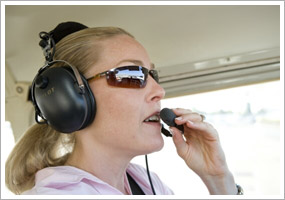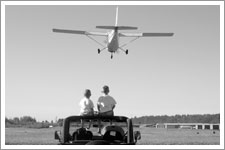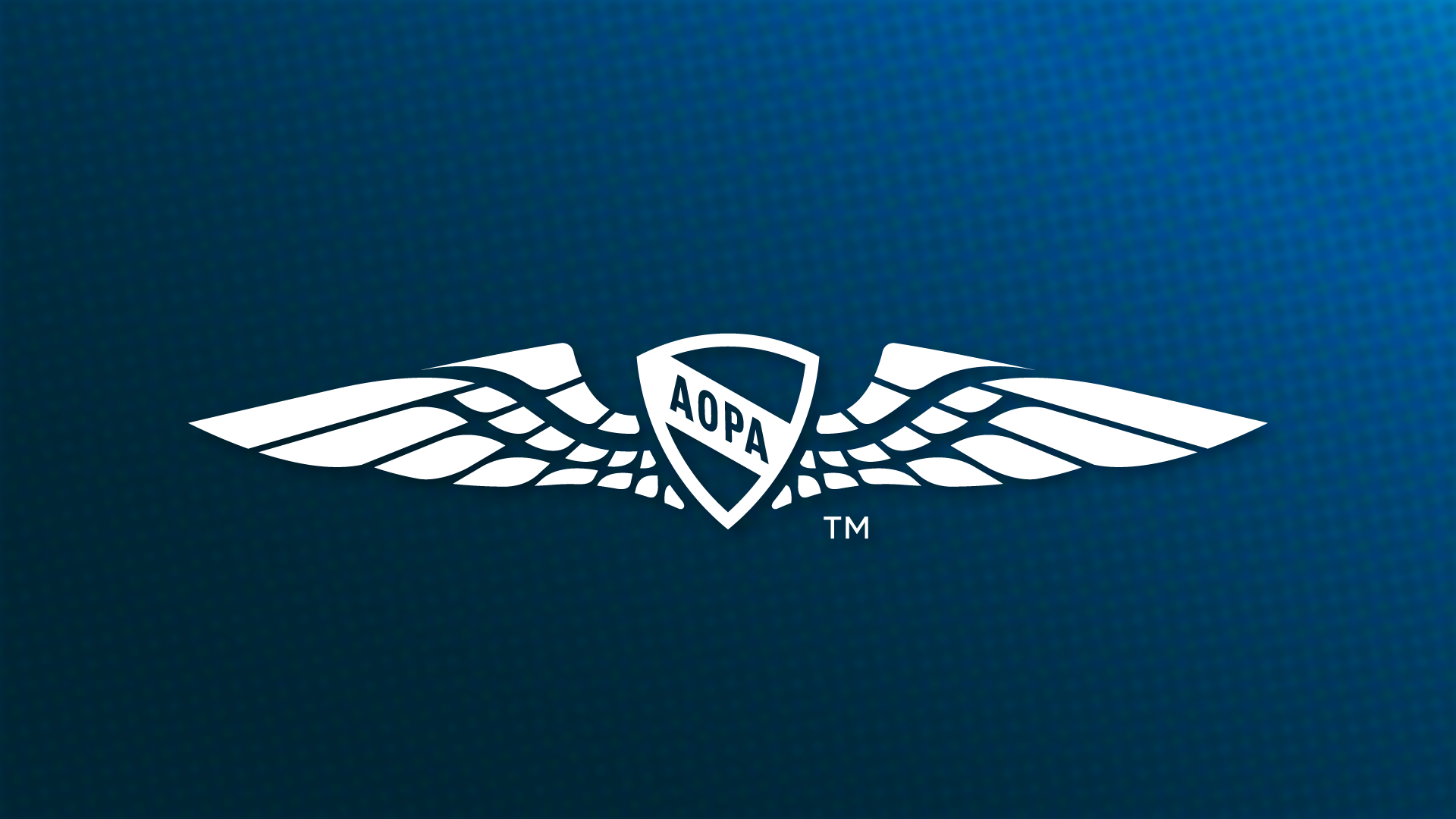| This ePilot Flight Training Edition is sponsored by

Advertisers
                 
Do not reply to this e-mail. Got news? Contact ePilot . Having difficulty using this service? Visit the ePilot Frequently Asked Questions now at AOPA Online or write to [email protected].
Aircraft Owners and Pilots Association
421 Aviation Way
Frederick, MD 21701
Tel: 800/USA-AOPA or
301/695-2000
Copyright © 2008 AOPA. | | Training Tips | | 'ACKNOWLEDGE!'
 Sometimes in busy airspace or on the ground at a bustling airport, you'll hear a controller fire off instructions followed by a command such as, "Hold short, 'acknowledge' hold." Why was "acknowledge" added to the transmission? What should the acknowledging pilot say? Sometimes in busy airspace or on the ground at a bustling airport, you'll hear a controller fire off instructions followed by a command such as, "Hold short, 'acknowledge' hold." Why was "acknowledge" added to the transmission? What should the acknowledging pilot say? The specific meaning of "acknowledge," given in the " Pilot/Controller Glossary" in the Aeronautical Information Manual (AIM), is "Let me know that you have received my message." That's always key to clear communications. So if a controller specifically requests that you "acknowledge," give an immediate, positive response. "When talking to a controller, the general rule is that you must fully acknowledge all commands. Climbs, descents, turns, and clearances must be repeated so that the controller knows that you received the proper information. Acknowledging a descent clearance with just your call sign is not acceptable and can incur the wrath of the controllers, especially if they are busy and have to waste time getting you to do your job. Likewise, acknowledging a command without using your call sign is also a no-no, because the controller doesn't know which aircraft took the command," Chip Wright said in the May 2005 AOPA Flight Training feature "Talking the Talk." "On the ground, the most critical—but by no means the only—items to read back are hold-short commands, and it doesn't matter if the hold-short command is for a runway or a taxiway. If you don't properly read back the hold-short command, the controller is required to bug you until you do." Acknowledging instructions is not the same as a "readback," in which you repeat the entire message to the controller, such as when receiving taxi instructions. The AIM explains: "When taxi instructions are received from the controller, pilots should always read back: (a) The runway assignment.
(b) Any clearance to enter a specific runway.
(c) Any instruction to hold short of a specific runway, or taxi into position and hold. Controllers are required to request a readback of runway hold short assignment when it is not received from the pilot/vehicle." These and other terms used by ATC are discussed in the " New Pilot's Guide to ATC Communications" article on AOPA Flight Training Online. Make it your mission to know how to respond. Help another student save!
Forward this issue to another student who could benefit from AOPA's training resources and tools, including AOPA Flight Training magazine, by enrolling in a free six-month AOPA trial membership.
| | Your Partner in Training | | After 30 hours and a cross-country, the student pilot no longer felt motivated to fly, but rather to press on just to get it done. Was something wrong? Mid-training slumps are not uncommon and nothing to fear. Sometimes we lose the focus of why we're learning to fly because we're concentrating so hard on doing everything correctly. There are some simple steps to spice up your program. Talk to your flight instructor about scheduling a $100 hamburger trip or flying to a grass strip if the FBO allows it. Find more easy tips and insights in this article from the June 2003 issue of AOPA Flight Training . Did you know that student pilots who join AOPA are three times more likely to complete their flight training? Membership includes unlimited access to aviation information by phone (800/USA-AOPA, weekdays from 8:30 a.m. to 6 p.m. Eastern time) or from Flight Training Online or AOPA Online. If you're not already a member, join today and get the pilot's edge. Login information is available online.
| | Flight Training News | | SMALL KNOWLEDGE TESTING CENTERS LOSE CERTIFICATION
Under a new FAA policy, roughly 120 CATS and LaserGrade testing facilities across the country have lost their knowledge test administration privileges because they gave fewer than 25 tests last year. AOPA has requested that the FAA reverse its policy and immediately reinstate the testing centers’ privileges. "AOPA is very concerned that this FAA policy punishes existing testing providers and does not support the ongoing industry effort to grow the pilot population, " wrote Rob Hackman, AOPA senior director of regulatory affairs, to the FAA. The FAA’s policy actually presents a barrier to students pursuing their pilot certificate—a barrier that would only exacerbate the current decline in new student starts. Read more on AOPA Online. ADIZ TRAINING REQUIREMENT FRAUGHT WITH PROBLEMS, AOPA SAYS
Any pilot who flies VFR within 60 nautical miles of the Washington, D.C., VOR/DME must complete the FAA’s one-time special awareness training online course or seminar by Feb. 9, 2009. The FAA’s mandate for training stems from an effort to reduce the number of Washington, D.C., Air Defense Identification Zone (ADIZ) incursions. “AOPA is extremely disappointed that the FAA is requiring pilots who won’t be flying in the ADIZ to take the training,” said Andy Cebula, AOPA executive vice president of government affairs. “The FAA’s mandate sets up an enforcement trap for pilots who aren’t from the D.C. area but who will be passing through or landing within the 60-nm veil.” Read more on AOPA Online. FAA WEIGHS SPORT PILOT RULE CHANGES
With some four years of real-world experience behind it, the FAA is zeroing in on proposed changes to the sport pilot rule. In addition to the 22 proposed changes that were already announced earlier this year, AOPA wants to see the aircraft gross weight boosted beyond the current 1,320 pounds. This could allow the inclusion of a bigger group of existing production airplanes such as the Cessna 150. It would also allow room for advanced safety equipment like emergency parachutes. Read more on AOPA Online. JET DELIVERIES UP, PISTON DELIVERIES DOWN IN 2008
Jet deliveries surged 39 percent to 663 in the first half of 2008 while turboprops jumped 19 percent to 222 aircraft. Meanwhile, deliveries of piston aircraft fell 16 percent to 1,034. The latest numbers from the General Aviation Manufacturers Association (GAMA) show total billings reached $12.1 billion for the first half of the year, up 24 percent from $9.8 billion during the same period last year. GAMA President and Chief Executive Pete Bunce said expanding worldwide markets are having a positive effect on the turbine segments of the industry. EMBRY-RIDDLE OFFERS ONLINE AVIATION SPECIALTY COURSES
Embry-Riddle Aeronautical University-Worldwide recently introduced a series of online aviation specialty courses available to all. The 23 courses are self-guided and cost $99 each. The subjects are aimed at both professional and general aviation pilots. Topics include thunderstorm avoidance, cold weather winter operations, contaminated runway operations, TCAS/ACAS, wind shear, and many more. For more information or to register, see the Web site. GIRLS WITH WINGS ANNOUNCES SECOND ANNUAL SCHOLARSHIP
Girls with Wings, an organization created to promote girls' interest in aviation, is accepting applications for its second annual scholarship. The program will award $500 to the author of the best essay on why she is a role model for Girls with Wings, including her aspirations and career goals. Applicants must not have completed a private pilot certificate. The deadline to apply is Nov. 1, 2008. See the Web site for more details. HE LOVES TO FLY, SO HE BOUGHT THE FLIGHT SCHOOL
Michael Smith wanted to be in the airplane business after working with motorcycles for 16 years, but he didn't know how to fly. Many student pilots will buy an airplane to make it more cost-effective to learn. Smith bought a flight school at Montgomery Regional (Dannelly Field) in Montgomery, Ala., according to an article in the Montgomery Advertiser . Smith has owned SouthStar Aviation since January. He intends to complete his private pilot certificate but doesn't anticipate he'll become a flight instructor. KINGS TO BE SAN DIEGO AEROSPACE HALL OF FAME INDUCTEES
John and Martha King of King Schools Inc. will be inducted into the San Diego Air & Space Museum's International Aerospace Hall of Fame in October. Other inductees this year include M. Scott Carpenter, one of the Mercury astronauts who was the second American to orbit the Earth; Roscoe Brown and Lee Archer, representing the Tuskegee Airmen; J. Robert Beyster, founder of Science Applications International Corporation; Steve Pisanos, who flew with the Eagle Squadrons during World War II; and Brig. Gen. Robert L. Cardenas, U.S. Air Force Flying Wing test pilot.
| | Inside AOPA | | 'OUR DAD’S A PILOT' TAKES FIRST PLACE IN JULY PHOTO CONTEST
 “My wife took this picture of our boys in a park-n-ride at the south end of the Auburn Municipal Airport in Auburn, Wash.,” said Brian Hash of the winning snapshot taken by Denise Hash. “Our boys love aviation and flying in small airplanes.” Nolan, 6, started flying in airplanes when he was five weeks old. CJ, 4, aims to be a pilot when he gets bigger. Enter your photo for a chance at cash prizes and to be published in AOPA Pilot . Only 18 days remain before the contest ends Sept. 2. Go online to see the 2008 monthly contest winners and click on “2007 winners” to view last years’ grand finale and a slideshow of honorable mentions. “My wife took this picture of our boys in a park-n-ride at the south end of the Auburn Municipal Airport in Auburn, Wash.,” said Brian Hash of the winning snapshot taken by Denise Hash. “Our boys love aviation and flying in small airplanes.” Nolan, 6, started flying in airplanes when he was five weeks old. CJ, 4, aims to be a pilot when he gets bigger. Enter your photo for a chance at cash prizes and to be published in AOPA Pilot . Only 18 days remain before the contest ends Sept. 2. Go online to see the 2008 monthly contest winners and click on “2007 winners” to view last years’ grand finale and a slideshow of honorable mentions. LEARNING TO FLY THE ASPEN AVIONICS EFD1000
A good pilot is always learning. That's especially true with new avionics. The Aspen Avionics EFD1000 primary flight display (PFD) installed in AOPA's Get Your Glass Sweepstakes Piper Archer is new on the market, and there aren't any interactive training materials. So our editors have had to learn the unit based solely on the manual. Read this week's sweepstakes update to find out what it's like to fly this new PFD. TFR TROUBLE: WHAT YOU NEED TO KNOW
When a Blackhawk helicopter or F-16 is off your wing, the last thing you're thinking about is what the FAA is going to do once you get on the ground. That thought won't likely cross your mind until you're safely on the ground and have stopped shaking. Then reality sets in, and you realize that you violated a temporary flight restriction (TFR). The FAA will be asking for your certificate. So what do you do now? Find out on AOPA Online. SAVE MONEY ON VACATION
AOPA offers great rates on airfare, hotels, and cruises through AOPA Online Travel. You can even save on your car rental from Alamo, Avis, or Hertz with special AOPA discounts and member-only coupons for free rental days, dollars off, and free upgrades. A portion of all the revenue generated is returned to AOPA and reinvested to fund our efforts to maintain the freedom, safety, and affordability of general aviation. So if you're planning a vacation, why not book yours through the only program that saves you money and supports GA?
| | Training Products | | FREE DOWNLOAD OF FAA'S 'BALLOON FLYING HANDBOOK'
If you've wondered what it's like to fly a hot-air balloon, the FAA's Balloon Flying Handbook (FAA-H-8083-11A) is the place to start. Aviation Supplies & Academics offers a free download of the handbook in zip format. The publication begins with a brief history of balloon flight and examines equipment and preparing for flight, inflation, launch and landing, in-flight maneuvers, and postflight procedures, among other topics. The handbook is the source for balloon questions appearing on the knowledge test. Note: Products listed have not been evaluated by ePilot editors unless otherwise noted. AOPA assumes no responsibility for products or services listed or for claims or actions by manufacturers or vendors.
| | Final Exam | | Question: This time of year thunderstorms are common. Can you tell me about some of their characteristics? Answer: Thunderstorms need sufficient moisture, unstable air, and lifting action to form. They have three stages: towering cumulus, mature, and dissipating. In the towering cumulus stage, water vapor is lifted by updrafts and condenses to form a cumulus cloud. Falling rain and downdrafts indicate the mature stage of a thunderstorm. Finally, a storm dissipates as the air below the cloud cools and cuts off the supply of warm, humid air. The anvil shape of some thunderstorm clouds is easily seen, but storms can also be embedded in haze or large cloudbanks, which make them difficult to spot. Put at least 20 nm between you and the storm when flying around isolated storms. When faced with a line of convective activity, landing and waiting for the weather to pass is usually the best choice. Learn more about thunderstorms by taking the AOPA Air Safety Foundation's online course, Weather Wise: Thunderstorms and ATC . Got a question for our technical services staff? E-mail to [email protected] or call the Pilot Information Center, 800/872-2672. Don't forget the online archive of "Final Exam" questions and answers, searchable by keyword or topic.
| | What's New Online | | When you're on the road or flying commercially, podcasts can be a great traveling companion. Now you can take along "Never Again," one of the most popular features of AOPA Pilot, in podcast form. Listen or download from AOPA Online.
| | Picture Perfect | | Looking for some really fabulous aviation photography? All the air-to-air photos and beautifully detailed ground images used by AOPA Pilot magazine over the years are yours at the click of a mouse button. Download your favorite images to use for wallpaper or send an e-postcard. For more details, see AOPA Online.
| | Aviation Events & Weather | | Want something to do this weekend? Wanting to plan an aviation getaway? See our online calendar of events. We’ve enhanced our calendar so that with one click, you can see all of the events listed in the calendar regions you selected when personalizing ePilot. Now you can browse events listed two weeks to a few months out to make your planning easier. Before you take off on an adventure, make sure you check our current aviation weather provided by Jeppesen. To submit an event or to search all events in the calendar visit AOPA Online. For airport details, including FBO fuel prices see AOPA's Airport Directory Online. FLIGHT INSTRUCTOR REFRESHER CLINICS
The next AOPA Air Safety Foundation Flight Instructor Refresher Clinics are scheduled in Reno, Nev., and Allentown, Pa., Aug. 16 and 17; and in Phoenix, Ariz., and Sacramento, Calif., Sept. 6 and 7. For a complete schedule, see AOPA Online. Can't make it in person? Sign up for the CFI Refresher Online. AOPA AIR SAFETY FOUNDATION SAFETY SEMINARS
AOPA Air Safety Foundation Safety Seminars are scheduled in Wichita, Kan.; Ypsilanti, Mich.; and Germantown, Tenn., on Sept. 8. Topics vary—for details and a complete schedule, see AOPA Online. | |





















 Sometimes in busy airspace or on the ground at a bustling airport, you'll hear a controller fire off instructions followed by a command such as, "Hold short, 'acknowledge' hold." Why was "acknowledge" added to the transmission? What should the acknowledging pilot say?
Sometimes in busy airspace or on the ground at a bustling airport, you'll hear a controller fire off instructions followed by a command such as, "Hold short, 'acknowledge' hold." Why was "acknowledge" added to the transmission? What should the acknowledging pilot say? “My wife took this picture of our boys in a park-n-ride at the south end of the Auburn Municipal Airport in Auburn, Wash.,” said Brian Hash of the winning snapshot taken by Denise Hash. “Our boys love aviation and flying in small airplanes.” Nolan, 6, started flying in airplanes when he was five weeks old. CJ, 4, aims to be a pilot when he gets bigger.
“My wife took this picture of our boys in a park-n-ride at the south end of the Auburn Municipal Airport in Auburn, Wash.,” said Brian Hash of the winning snapshot taken by Denise Hash. “Our boys love aviation and flying in small airplanes.” Nolan, 6, started flying in airplanes when he was five weeks old. CJ, 4, aims to be a pilot when he gets bigger. 

